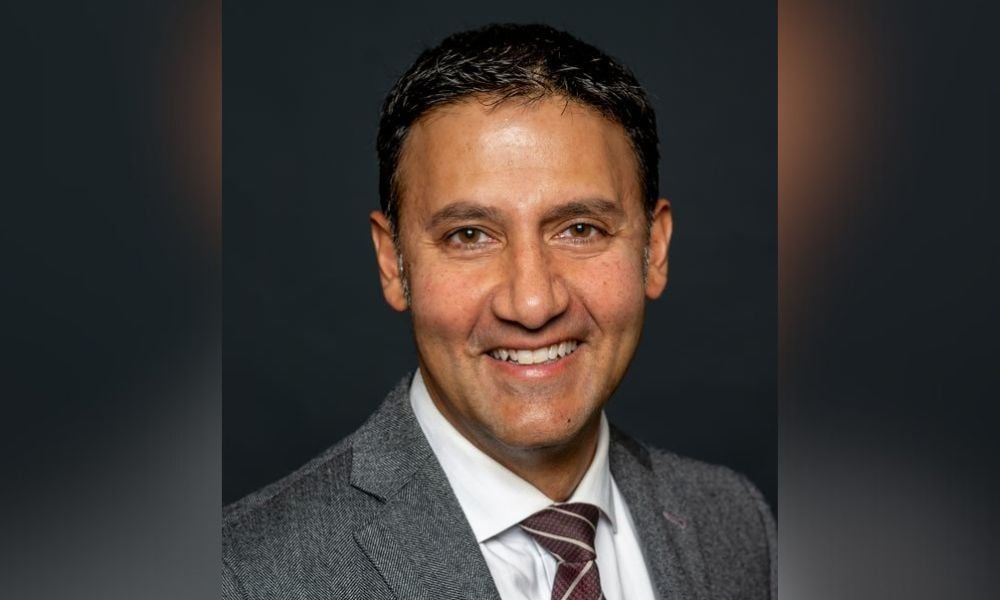The Supreme Court of Canada’s unusual request to re-hear a case in order to allow newly appointed Justice Clément Gascon to participate has led many observers to assume an even split among judges, requiring a tiebreaker — but there are other possibilities to consider.
 The request was sent yesterday to counsel in Conception v. R., a case that will decide whether hospital administrators at overcrowded mental-health facilities can deny a court order to immediately admit a patient.
The request was sent yesterday to counsel in Conception v. R., a case that will decide whether hospital administrators at overcrowded mental-health facilities can deny a court order to immediately admit a patient.
Conception was one of seven cases heard in the fall by a short-handed panel of eight sitting judges. The court has issued its decisions for the other six, leading to speculation about divisions at the top court. If an even number of sitting judges has resulted in a split, Gascon will break the deadlock by reviewing video of the hearing and, if necessary, posing questions to counsel in writing.
Counsel have until July 14 to decide whether to accede to the SCC’s request. When approached for comment, Jonathan Lisus at Lax O’Sullivan Scott Lisus LLP, who represented the Center for Addiction and Mental Health in the case, quickly confirmed his client has agreed to a re-hearing. Counsel for the other parties and the Crown could not be reached.
“Although this certainly isn't a common request, it is a process that has been adopted before,” says Lisus. “We don't think anything can be inferred about the state of the panel's deliberations and we look forward to providing the court with whatever assistance it requires to reach a decision.”
That’s no surprise, according to Eugene Meehan, of Supreme Advocacy LLP. “It would be difficult for counsel to say no. The practical reality at the Supreme Court of Canada is that, if the chief justice says jump, most counsel say ‘how high?’”
Meehan, who has been doing SCC work for 20 years, says this kind of a request is exceedingly rare. It happened twice in 1998, where a 4-3 split led to a re-hearing with nine panelists (on the off chance that two dissenting opinions could swing the vote). It also happened in 2004 and 2005, although no reasons were given in those instances.
The obvious assumption, he says, is the court has split down the middle, but a more nuanced — although equally plausible — reading of the tea leaves could point to Chief Justice Beverly McLachin’s own style of consensus building and a desire for a more inclusive ruling.
“This chief justice, McLachlin, is demonstrably a consensus builder. She tends to sit nine much more [than previous Chief Justice Antonio Lamer], so there’s a more full bench. And when you are arguing cases at the Supreme Court, you can see that she has nearly continual eye contact along the bench,” says Meehan. “She's very live as to her own colleagues.”
It follows, then, that the SCC may not be at loggerheads, but rather the chief justice’s office, which decides the coram of each hearing, may simply be looking for Quebec representation and a full complement of judges.
“It's juridical common sense to have provincial inclusivity wherever that is possible,” says Meehan. “The more voices and thoughts you have at the table, generally speaking, the better.”
 The request was sent yesterday to counsel in Conception v. R., a case that will decide whether hospital administrators at overcrowded mental-health facilities can deny a court order to immediately admit a patient.
The request was sent yesterday to counsel in Conception v. R., a case that will decide whether hospital administrators at overcrowded mental-health facilities can deny a court order to immediately admit a patient.Conception was one of seven cases heard in the fall by a short-handed panel of eight sitting judges. The court has issued its decisions for the other six, leading to speculation about divisions at the top court. If an even number of sitting judges has resulted in a split, Gascon will break the deadlock by reviewing video of the hearing and, if necessary, posing questions to counsel in writing.
Counsel have until July 14 to decide whether to accede to the SCC’s request. When approached for comment, Jonathan Lisus at Lax O’Sullivan Scott Lisus LLP, who represented the Center for Addiction and Mental Health in the case, quickly confirmed his client has agreed to a re-hearing. Counsel for the other parties and the Crown could not be reached.
“Although this certainly isn't a common request, it is a process that has been adopted before,” says Lisus. “We don't think anything can be inferred about the state of the panel's deliberations and we look forward to providing the court with whatever assistance it requires to reach a decision.”
That’s no surprise, according to Eugene Meehan, of Supreme Advocacy LLP. “It would be difficult for counsel to say no. The practical reality at the Supreme Court of Canada is that, if the chief justice says jump, most counsel say ‘how high?’”
Meehan, who has been doing SCC work for 20 years, says this kind of a request is exceedingly rare. It happened twice in 1998, where a 4-3 split led to a re-hearing with nine panelists (on the off chance that two dissenting opinions could swing the vote). It also happened in 2004 and 2005, although no reasons were given in those instances.
The obvious assumption, he says, is the court has split down the middle, but a more nuanced — although equally plausible — reading of the tea leaves could point to Chief Justice Beverly McLachin’s own style of consensus building and a desire for a more inclusive ruling.
“This chief justice, McLachlin, is demonstrably a consensus builder. She tends to sit nine much more [than previous Chief Justice Antonio Lamer], so there’s a more full bench. And when you are arguing cases at the Supreme Court, you can see that she has nearly continual eye contact along the bench,” says Meehan. “She's very live as to her own colleagues.”
It follows, then, that the SCC may not be at loggerheads, but rather the chief justice’s office, which decides the coram of each hearing, may simply be looking for Quebec representation and a full complement of judges.
“It's juridical common sense to have provincial inclusivity wherever that is possible,” says Meehan. “The more voices and thoughts you have at the table, generally speaking, the better.”







